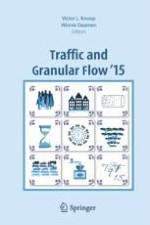2016 | OriginalPaper | Buchkapitel
Oppilatio: The Forecast of Crowd Congestions on Street Networks During Public Events
verfasst von : Daniel H. Biedermann, Peter M. Kielar, André Borrmann
Erschienen in: Traffic and Granular Flow '15
Aktivieren Sie unsere intelligente Suche, um passende Fachinhalte oder Patente zu finden.
Wählen Sie Textabschnitte aus um mit Künstlicher Intelligenz passenden Patente zu finden. powered by
Markieren Sie Textabschnitte, um KI-gestützt weitere passende Inhalte zu finden. powered by
